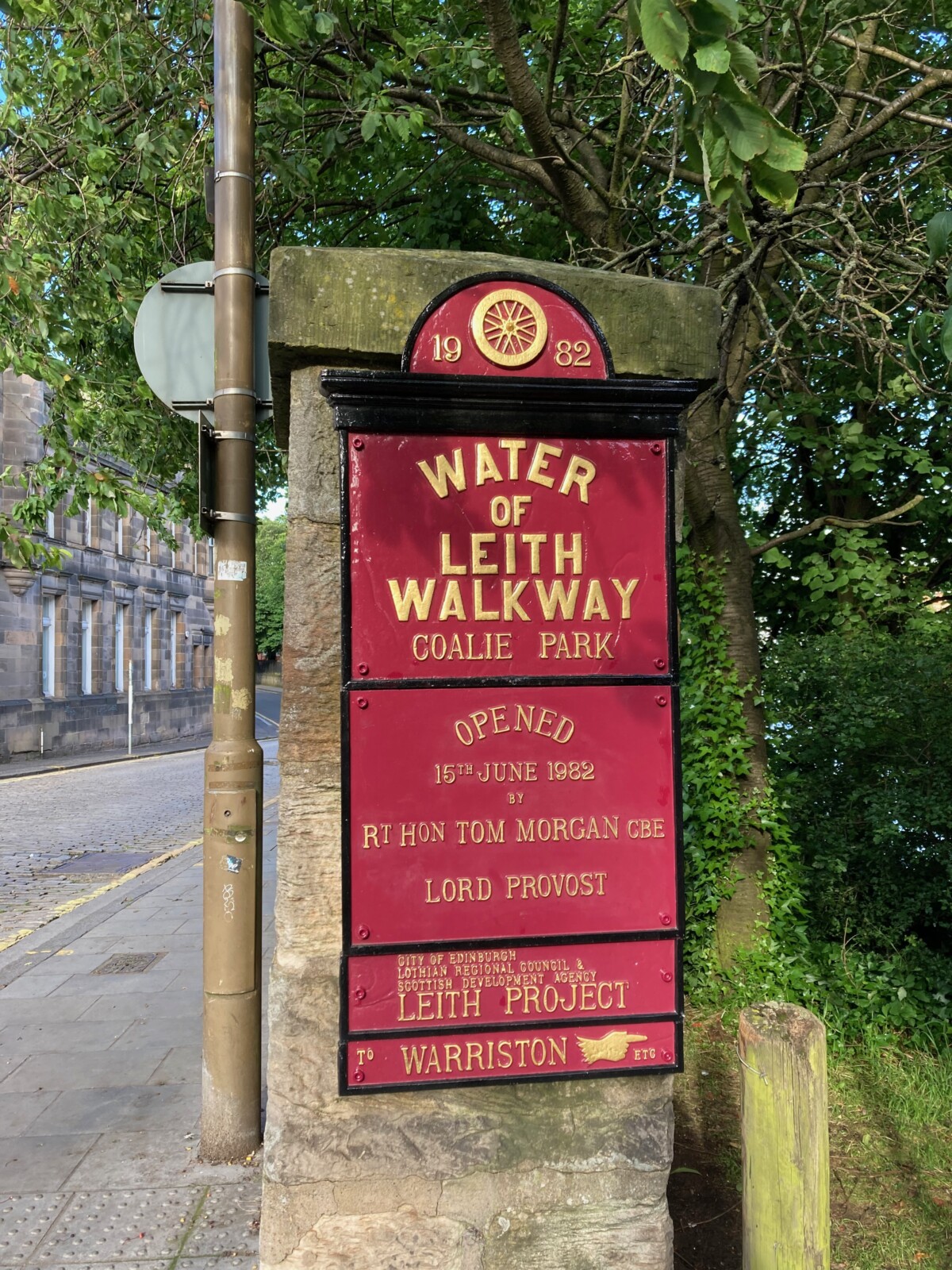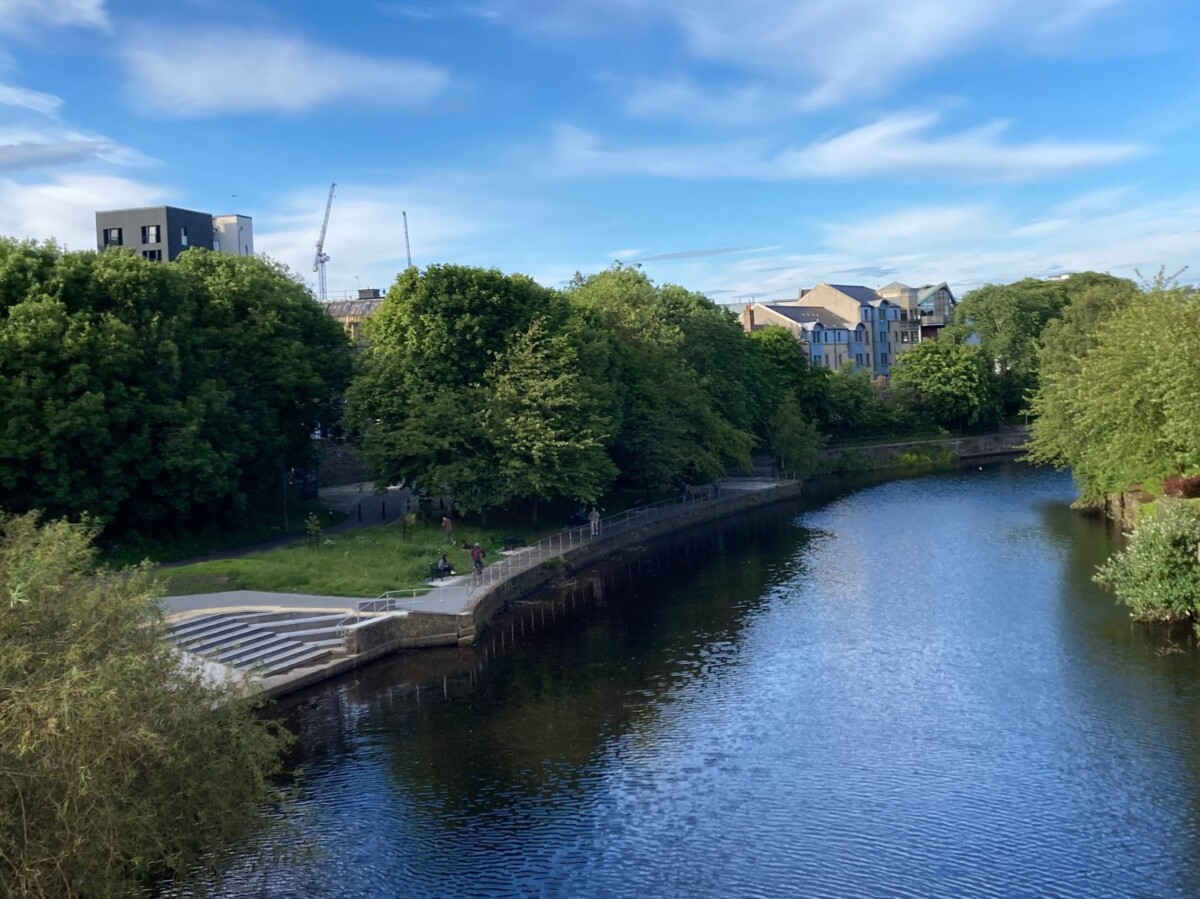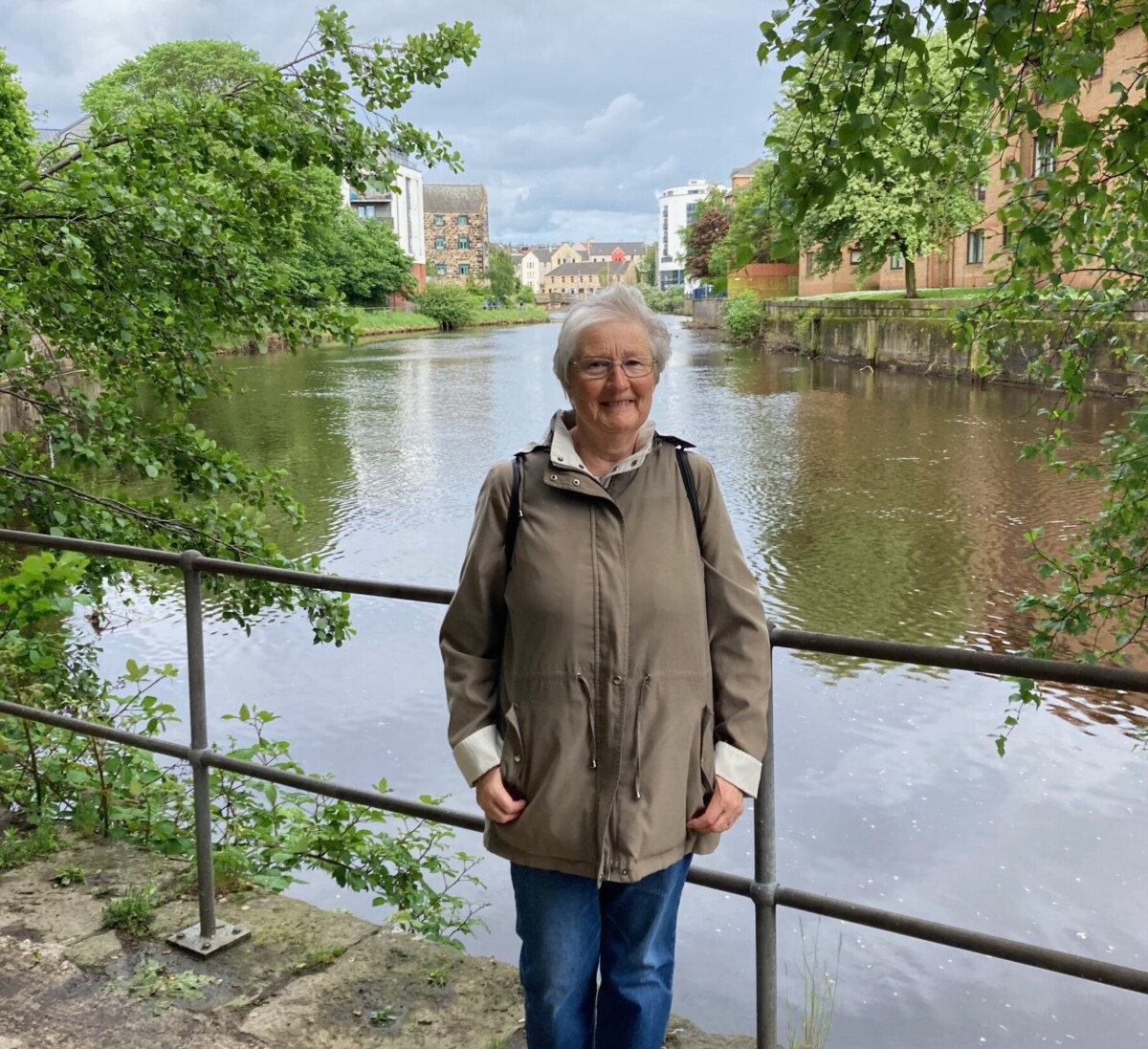 A striking feature of the yard’s walkway, the slipway is one of the few working examples of the “patent slip” design from the 19th century. Volunteer Elaine continues her research into the slipway, tracing its origins in Leith, Scotland…
A striking feature of the yard’s walkway, the slipway is one of the few working examples of the “patent slip” design from the 19th century. Volunteer Elaine continues her research into the slipway, tracing its origins in Leith, Scotland…
One of the outstanding features of Underfall Yard’s maritime heritage is its historic patent slip. The slip gets its name from the fact that the design, featuring a moveable cradle running on metal rails, was patented by Thomas Morton, a shipbuilder of Leith, near Edinburgh. I had visited Leith several times, as my daughter has recently moved there. However, it was only when researching the history of the Yard’s slip for a blog post that it occurred to me to wonder where exactly Morton had built his original.
This is when I discovered Threadinburgh. This excellent site, dedicated to overlooked stories of Edinburgh history, features a thread about Thomas Morton. It is illustrated with an 1822 town plan, on which “Mr Morton’s Patent Slip” is clearly marked. On our next trip to Leith, I resolved to track it down.
Like Bristol, the port of Leith, standing on a tidal river, underwent significant improvement at the beginning of the 19th century. While William Jessop was transforming the tidal Avon into the Floating Harbour, Scottish engineer John Rennie was building docks at the mouth of the Water of Leith. The East and West Docks were opened in 1806 and 1817 respectively.
Thomas Morton, a Leith native, established his shipyard upstream from the new docks. Not having the money for a dry dock, he “resorted to the process of hauling [vessels out of the water] on greased ways.” This was difficult, time-consuming and risked damage to the vessel being hauled. Morton’s solution was to design the “heave-up slip,” which enabled vessels to be hauled safely, protected by a wooden cradle running on rails. He built the first slip at his yard in 1818 and patented the design the following year.
So where was this slip built, and did any traces of it remain? Armed with the 1822 map, and with my daughter and her partner as guides, I set off to find out. We headed first to the old quayside, known as the Shore.
 The evolution of the port of Leith has followed a similar pattern to that of Bristol. Decline of commercial shipping in the 1970s led to a period of depression and neglect. Fortunately, the value of the waterway and surviving industrial buildings was recognised, and regeneration began in the 1980s. The Shore, like Bristol’s Harbourside, is now a vibrant area of bars, cafes and waterside apartments.
The evolution of the port of Leith has followed a similar pattern to that of Bristol. Decline of commercial shipping in the 1970s led to a period of depression and neglect. Fortunately, the value of the waterway and surviving industrial buildings was recognised, and regeneration began in the 1980s. The Shore, like Bristol’s Harbourside, is now a vibrant area of bars, cafes and waterside apartments.
Crossing the river, we walked upstream along the Water of Leith path, once a busy quayside, now a tranquil long-distance footpath. It was not long before we spotted a sharp double bend in the quay wall corresponding to the site of the slip on the 1822 plan.
Morton’s shipyard has long since disappeared. When the railway came to Leith, the site became a coalyard to supply the steam trains. That too became redundant, and in the regeneration of the 1980s the area was landscaped and given the name Coalie Park.
Sadly, nothing remains of the slip itself, and I could find no reference to Morton or his slipway on the information boards around the site, but there are indications on the ground once you know where to look. The land slopes down to the water, showing where the slipway was sited. The angle of the quay wall indicates the line of the rails running down into the water. Standing on the quayside, looking down the Water of Leith, it is possible to imagine how vessels would have been hauled out or lowered into the water.
 The river is not wide at this point. Morton’s invention allowed him to make the best use of a constricted site, a factor which made it attractive to other small shipbuilding firms. By the turn of the century, one was to be found in nearly every important harbour.
The river is not wide at this point. Morton’s invention allowed him to make the best use of a constricted site, a factor which made it attractive to other small shipbuilding firms. By the turn of the century, one was to be found in nearly every important harbour.
The shipbuilding firm of Ross and Sage installed the Yard’s patent slip in 1854, and it was “found to answer admirably.” Despite several rebuilds and a period of near-dereliction in the 1970s, it has survived for 170 years. It is now one of the country’s very few examples of Morton’s “ingenious and valuable invention” that is not only intact, but still in commercial operation.
This article was written by volunteer Elaine Clark and reviewed by Underfall Yard Trust. Click here to read more about the Yard’s volunteering program.
The Recovery and Reinstatement Project is now underway after the fire in May 2023. Click here to read more and find out how to support the project…
